The Shared Origins of Football, Rugby,
and Soccer
The Shared Origins of Football, Rugby,
and Soccer
Christopher Rowley
ROWMAN & LITTLEFIELD
Lanham Boulder New York London
Published by Rowman & Littlefield
A wholly owned subsidiary of The Rowman & Littlefield Publishing Group, Inc.
4501 Forbes Boulevard, Suite 200, Lanham, Maryland 20706
www.rowman.com
Unit A, Whitacre Mews, 26-34 Stannary Street, London SE11 4AB
Copyright 2015 by Rowman & Littlefield Publishers, Inc.
All rights reserved. No part of this book may be reproduced in any form or by any electronic or mechanical means, including information storage and retrieval systems, without written permission from the publisher, except by a reviewer who may quote passages in a review.
British Library Cataloguing in Publication Information Available
Library of Congress Cataloging-in-Publication Data
Rowley, Christopher, 1948
The shared origins of football, rugby, and soccer / Christopher Rowley.
pages cm
Includes bibliographical references and index.
ISBN 978-1-4422-4618-8 (hardcover : alk. paper) ISBN 978-1-4422-4619-5 (ebook)
1. Ball gamesHistory. 2. SportsHistory. 3. Football. 4. Rugby football. 5. Soccer. I. Title.
GV861.R68 2015
796.309dc23
2015011569
 TM The paper used in this publication meets the minimum requirements of American National Standard for Information Sciences Permanence of Paper for Printed Library Materials, ANSI/NISO Z39.48-1992.
TM The paper used in this publication meets the minimum requirements of American National Standard for Information Sciences Permanence of Paper for Printed Library Materials, ANSI/NISO Z39.48-1992.
Printed in the United States of America
Acknowledgments
Much thanks must go to my wife, Anitra, and my friend Kevin Bales for their support and advice during the research and preparation of this book. The road was long and winding, but they provided vital encouragement and assistance.
Introduction
Football is a thing of passion. Anyone whos played any of the seven varieties of football and enjoyed it knows this. The ballit may be round, it may be an ellipsecomes to you. It may have slid across the turf to your feet, or been thrown by a quarterback into your grasp, or been tossed back to you by the scrum half, and now its yours for a few moments to do something with. And with it comes both opportunitywhich lights a fire in your head because you have the balland responsibility, a crushing weightI have the ball, dont lose it, dont drop it, dont mess up! And you proceed to dribble, pass, or get tackled and hurled to the turf, or maybe, once in a while, you break that tackle, you dribble past that central defender, you break right through their secondary, and hey, you even score! At the amateur level, thats the great reward, thats why youre out there on the field, despite the freezing wind and rain or the broiling sun, and if youre good enough, well then maybe you had a professional career, with its wide array of payoffs and rewards. But even the greatest players in any of the seven codes still dream of scoring, connecting, finding the perfect pass, making that great run, running onto that cross, and jumping high and redirecting it with your forehead past an anguished goalkeeper and into the net.
Apologies to goalkeepers, but then, you people know that youre different.
Football is possessively claimed by its code-keepers, the faithful fans of one or another of the codes. Our football is the true football, they all say. And for them, it is, but from a historical perspective, well, it gets much more complicated.
Today, there are the seven codesin alphabetical orderAmerican football, association football, Australian rules football, Canadian football, Gaelic football, rugby league football, and rugby union football. They can be grouped in various ways. One grouping, which we might call the Cladistic Set, places association football on one side, alone. In the middle lies Gaelic and Australian rules football. On the other side is the rugby group, which includes the American and Canadian games. Another more traditional way of grouping them is by the old ballhandling or nonhandling standard, where association football stands alone on one side of the divide and the remaining codes are situated on the other. Or you might group them by global spread, where again association football is by itself and the others are parceled out on different paths, from the most widely played, rugby union, to the most spectacular and heavily televised, American, to the lesser known, for example, Gaelic.
No matter which grouping is used, a basic fact remains: They are all descended from a common ancestor. The seven codes are a kind of demonstration of the power of evolution. Their remote ancestry, almost lost in the mists of time, involves developments in earlier civilizations that we barely know of or really understand. From fragmentary evidence we can put together a concept, a picture of how things came to be and progressed. We can see the beginnings of the intermediate species, followed by confusion, experiments, and bizarre outliers. And then we see the gradually solidifying central ancestor, which persisted despite outlandish threats to its existence. Quite suddenly, it began to speciate and spread throughout the continents to produce the flourishing world of football we know and love today.
Its a fascinating odyssey and one that Ive enjoyed investigating and recording. This book is the result of an outlandish enthusiasm, an obsessive interest (according to my wife), and a lifetime of reading history from various epochs and areas of the world. It is not an academic work, but I think the speculations and conclusions can withstand close scrutiny. I do not attempt to give fully detailed accounts of what has occurred in each of the seven codes in recent times; doing so would require seven (or more) volumes. But after reading this book, the reader will have an understanding of where his or her favorite code or codes of football came from, how they arose and developed, and what elements they have retained from the common ancestor. I hope that this understanding helps fans enjoy their particular code even more than they currently do, and if they should, by accident (or design), come upon another codesay Australian rules, or rugby league, or Canadian footballbeing shown on a peripheral television channel, perhaps they might pause, study the game before them, and see the commonalities, the basics that these games share and have taken from the ancestral game of football.
Chapter 1
Ancient Games
The first thought we need to grasp and keep hold of, for the purposes of this book, is that football is a concept that applies to a variety of sports, and today a family of different codes embody this concept, all with the word football somewhere in the mixAmerican football, Australian rules football, rugby football, Gaelic football, Canadian football, and, of course, the biggy, association football.
Association football, called soccer in the United States, can lay claim to being one of humanitys most widely practiced activities, commonplace on every continent, played by kids from Los Angeles to Buenos Aires, Capetown to Moscow, Hokkaido to Melbourne, and, in fact, just about everywhere. In one form or another, football is everywhere, on television screens in every town and the Internet throughout the world. It whips up fan frenzy and draws huge crowds to stadiums as diverse as the Bombonera in Buenos Aires, where the Boca Juniors play; Owen Field, aka the Gaylord Family Oklahoma Memorial Stadium in Norman, Oklahoma; and Patersons Stadium, in Perth, Western Australia, where both Fremantle and West Coast play football and Western Australia plays cricket.
Next page
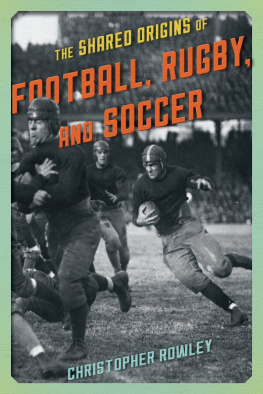

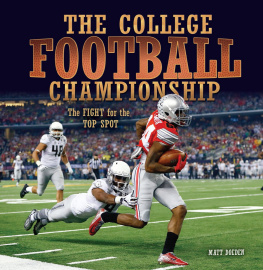
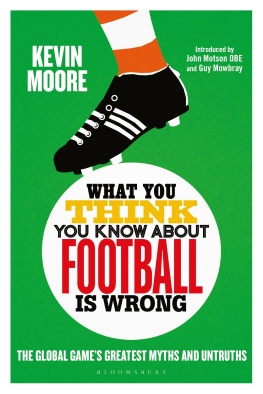
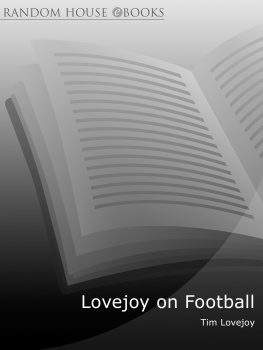
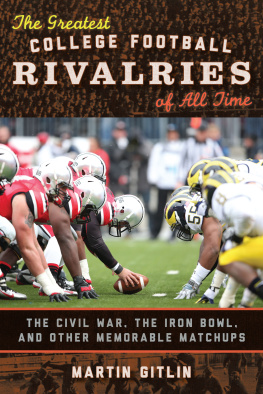
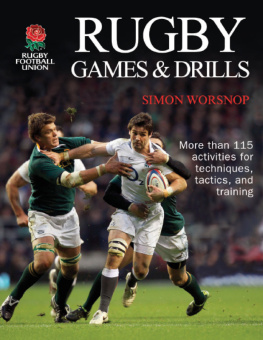
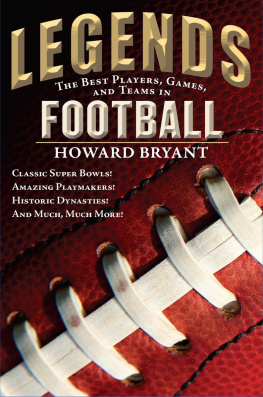
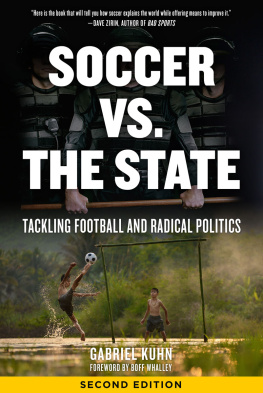
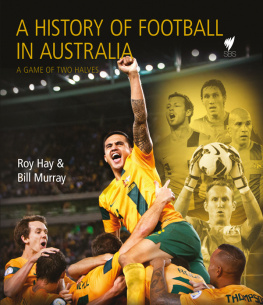
 TM The paper used in this publication meets the minimum requirements of American National Standard for Information Sciences Permanence of Paper for Printed Library Materials, ANSI/NISO Z39.48-1992.
TM The paper used in this publication meets the minimum requirements of American National Standard for Information Sciences Permanence of Paper for Printed Library Materials, ANSI/NISO Z39.48-1992.